A special event prompted my wife and I to spend a few days in Greater Sudbury, but you don’t have to need one to visit this renewed area.
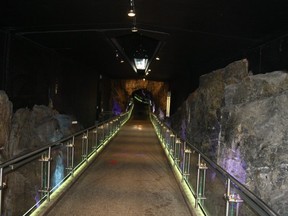
Reviews and recommendations are unbiased and products are independently selected. Postmedia may earn an affiliate commission from purchases made through links on this page.
Article content
The invitation came from one of my sisters: Join my husband and I as we celebrate our 40th wedding anniversary …
Advertisement 2
Article content
The location of the event would be a hall in their relatively new home of Greater Sudbury. That’s the official name for the overbounded city, which includes Sudbury and many of its suburban communities.
My wife and I, who live in Toronto, had our only visit to Greater Sudbury many years ago, and that was for less than a day. However, the chance to celebrate, and to visit with family members for the first time since before the start of the pandemic, was enough to get us to commit.
Fortunately, we also had the free time to stay for a few extra days and experience more of Greater Sudbury.
We discovered that, just like a bride at her wedding, Greater Sudbury has “something old, something new, something borrowed, something blue” … and a lot more.
Advertisement 3
Article content
‘SOMETHING OLD’
Science North (sciencenorth.ca/home) opened to the public on June 19, 1984, and had its official opening later that year with Queen Elizabeth and Prince Philip in attendance. It claims to be Northern Ontario’s most popular tourist attraction.
The facility’s design is true to Greater Sudbury’s mining and mineral history. As an example, visitors have to travel through an underground rock tunnel to reach the four-storey exhibit area. Like many parts of Greater Sudbury, which has a large Franco-Ontarian community, Science North is a bilingual facility.
Tip: Take the elevator up to Level 4, and walk down to the other levels.
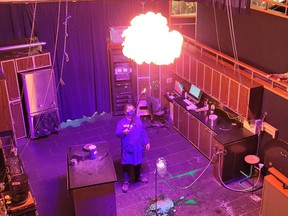
On Level 4 (“Discover. Learn. Play.”) are two video presentations — an interactive show dealing with climate change, and an explanation of dark matter in space. There also are the first of many interactive and educational exhibits, and while many are geared toward younger visitors, some are for all ages. I learned that a heart attack is a “circulation” problem, while a cardiac arrest is an “electrical” problem. Also, apparently, my resting heart rate is “poor” for my age.
Advertisement 4
Article content
On Level 3 (“Northern Ecosystems”), we met Notch, a turtle who is about 50 years old and might have been seen by the Queen during her 1984 visit. Other creatures on Level 3 are a beaver (in its own pond), a sleepy porcupine, a largemouth bass, snakes, frogs, and other turtles. In the middle of Level 3 is the Discovery Theatre, with demonstrations so spectacular that other Science North employees will sneak in to watch.
On Level 2 (“Nature Exchange”), be sure not to miss the small butterfly gallery, with at least a dozen different types of butterflies.
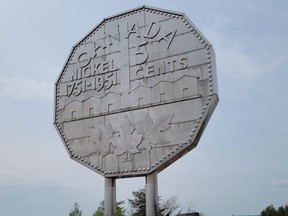
Even older than Science North is the Big Nickel, erected in 1964 at the site of Dynamic Earth (sciencenorth.ca/dynamic-earth). It’s an exact replica — but only a lot bigger — of a 1951 Canadian nickel, which celebrated the 200th anniversary of the discovery of the element nickel.
Advertisement 5
Article content
‘SOMETHING NEW’
In April, Place des Arts (maplacedesarts.ca/en/), a centre for the Franco-Ontarian arts and cultural organizations, opened in downtown Sudbury.
It’s “a project in the making for the last 13-15 years,” said project coordinator Sylvie Mainville. Seven professional francophone arts organizations now have their own space under one roof.
Symbolically relevant items from the heritage of the organizations, such as bread pans used in a Theatre du Nouvel-Ontario production in the 1990s, are incorporated into the design of the building.
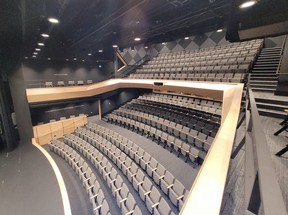
“La Grande Salle” is the main theatre space, with seating for 299 spectators. It’s “the best performing arts centre in Northern Ontario,” according to Ivan Pitre, the technical and production manager. The room not only has excellent acoustics inside, but is designed to keep noise from the outside from getting in — important when there are trains travelling not far away. “Le Studio Desjardins” is a “black box” theatre, designed for performances or rehearsals. Galerie du Nouvel-Ontario presents exhibits of francophone visual artists.
Advertisement 6
Article content
Also new was the base for our Greater Sudbury stay, the Hilton Garden Inn (hilton.com). The hotel opened in February 2021 and is close to two major malls: The RioCan Centre and the New Sudbury Centre.
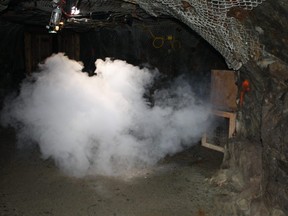
‘SOMETHING BORROWED’
I’m sorry, did you say burrowed?
Dynamic Earth, which is a part of Science North, focuses on Greater Sudbury’s mining history. The highlight is a 75-minute mine tour, in which visitors go underground to experience the challenges miners faced, and the evolution of mining technology from the early 1900s to present day.
Above ground, there are displays and interactive exhibits on mining and minerals. A multimedia presentation, “Nickel City Stories,” helps to explain the history of Greater Sudbury, and the importance of the nickel, which was buried close to the ground. Spoiler alert: Nickel plays a big role in the stainless steel which is used to make your kitchen sink!
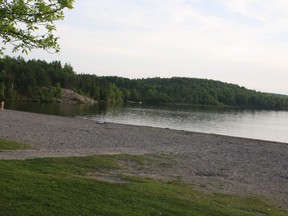
Advertisement 7
Article content
‘SOMETHING BLUE’
In Greater Sudbury, something blue refers to the city’s many lakes. Due to the overbounded nature of the city (3,627 square kilometers in area), Greater Sudbury is able to claim that it contains more lakes — 330 — than any other Canadian municipality.
Blue also refers to the rare “Blue Flag” certification for beaches which meet high environmental, safety and cleanliness standards. Only 22 “Blue Flag” beaches received the award this year in Canada, and two are on Ramsey Lake in downtown Sudbury.
We spent a warm evening at one of those “Blue Flag” beaches, Moonlight Beach, which is on the eastern edge of Lake Ramsey. It has a sandy beach filled with young people enjoying Spikeball and other games, a family picnic area, and a kids play area.
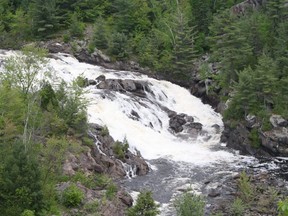
Advertisement 8
Article content
To see some of the blue water in Greater Sudbury turn a frothy white, head north on Hwy. 144 just past Dowling to the A.Y. Jackson Lookout, where you can discover Onaping Falls. Jackson, one of Canada’s celebrated Group of Seven artists, painted landscapes of the area in 1953.
At the lookout, there is one wheelchair-accessible route to a viewing platform, and a separate route to another platform. Looking at the untouched beauty of the falls, it’s easy to imagine that there was little difference between what we saw in 2022 and what Jackson saw years ago.
Also blue are the “Bluecoats” — full-timers, part-timers, students and volunteers — who work at Science North and Dynamic Earth. They are happy to answer a question, turn on a display, or conduct a demonstration in Science North’s Discovery Theatre.
Advertisement 9
Article content
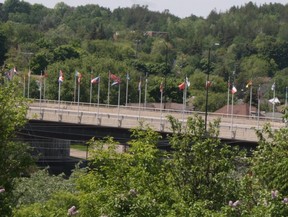
GOING DOWN THE AISLE
Many of Greater Sudbury’s residents arrived from a wide variety of the world’s nations. To celebrate the city’s multicultural status, flags representing the backgrounds of these residents fly on the Bridge of Nations, a part of Paris St. which crosses the railroad lines just south of the downtown area.
FLORAL ARRANGEMENTS
Greater Sudbury residents are not shy to tell visitors about their appreciation for the “regreening” efforts done in their area during the past 50 years.
The mining and smelting which took place over the years slowly deteriorated the landscape (even leading to uncomplimentary references to a “moonscape”), but a combined effort by governments, educational institutions, the mining industry, and other partners has helped to reverse the damage.
“The city of Greater Sudbury is a world leader in the reclamation of environmentally impacted landscapes,” a sign at Dynamic Earth reads.
In downtown Sudbury, Bell Park offers an area in which to take a relaxing stroll alongside trees, flowers and manicured lawns, or on the boardwalk next to the western side of Lake Ramsey. Bell Park also contains an outdoor amphitheatre. Bell Park’s beach is Greater Sudbury’s other “Blue Flag” beach.
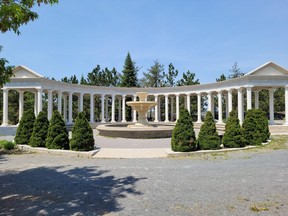
Advertisement 10
Article content
PHOTO SESSION
The Grotto of Our Lady of Lourdes is hard to find, but worth the visit. It’s at 271 Van Horne St., across from the Jeanne Sauve public school, and the signage at the entrance is small.
Some people visit for quiet reflection and inspiration at the statues and monuments, such as the Stations of the Cross, the Beatitudes, and the 10 Commandments
Others arrive in their best formal wear to pose for pictures to celebrate a wedding, graduation, or prom at the Grotto Colonnade and Fountain, a series of columns in a semicircle, with a fountain in the middle. It was designed and built in 2012 by Giovanni (John) Masotti, who was born in Italy and later moved to Greater Sudbury.
THE RECEPTION
What comes after the wedding? Usually, it’s a reception, including a meal.
In Greater Sudbury, we were able to dine at a pair of well-recommended restaurants, Bella Vita Cucina and The Laughing Buddha.
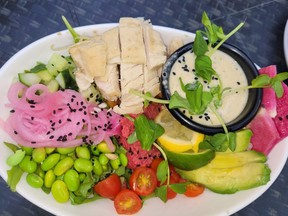
Advertisement 11
Article content
Bella Vita Cucina (bellavitacucina.ca) is an upscale Italian eatery. The family-owned restaurant, opened in 2008 by chef Filippo Rocca, built up enough of a customer base that it was able to survive the pandemic and emerge with all tables full of happy, chatty diners.
The Laughing Buddha (laughingbuddhasudbury.com) offers pizzas, healthy salads, beverages, and a relaxed atmosphere on its patio.
Breakfast/lunch options in Greater Sudbury include Jak’s Diner (jaksdiner.ca), a 1950s-style restaurant with good food and lots of it, and the Greater Sudbury location of Twiggs Coffee Roasters (twiggs.ca), set on the top of a rocky area with a patio which overlooks the street traffic below.
Near Dynamic Earth is Cara’s Convenience (carasconvenience.com), and yes, most of the room is a convenience store, but on the right-hand side is a quick-serve restaurant with pre-made sandwiches and a kitchen to prepare breakfasts and lunches. Check their Facebook page for a time-lapse video of the creation of their “Paul Bunyan” wall mural
Advertisement 12
Article content
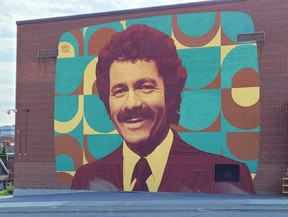
MASTER OF CEREMONIES
Alex Trebek was born in Greater Sudbury, and attended high school there before moving to Ottawa, working for CBC, hosting many game shows, and eventually becoming the host of Jeopardy!.
One of the tributes to Trebek, who died in 2020, is a mural on a wall of his high school, now known as Sudbury Secondary School. The mural, created in 2021, is on the corner of MacKenzie and Davidson Sts., which, appropriately, faces the main branch of the Greater Sudbury Public Library.
Many murals have been added to Greater Sudbury walls since 2013, in connection with the annual urban art and music festival Up Here (uphere.com/murals).
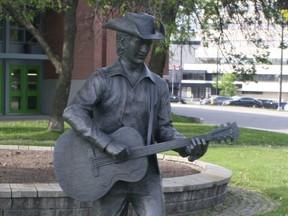
MUSICIAN
The late Stompin’ Tom Connors painted an uptempo musical picture of how mine workers blew off steam in Greater Sudbury in the 1960s with his song Sudbury Saturday Night.
Connors wrote the song during his time in Sudbury while staying at the Townehouse Tavern (townehousetavern.com), a downtown bar and restaurant which still operates as a live music venue.
Across the street from the Townehouse Tavern, in front of the Sudbury Community Arena, is a statue of Stompin’ Tom, shown playing guitar and about to stomp on a board.
Advertisement 13
Article content
A GIFT
For anyone staying a few days in Greater Sudbury, the gift comes from the government of Ontario, which has introduced the Ontario Staycation Tax Credit.
Eligible Ontario residents can claim 20% of qualified accommodation expenses for Ontario vacations in 2022, up to a maximum of $1,000 for an individual or $2,000 for a family. More info can be found at the Destination Ontario website (destinationontario.com/en-ca/ontario-staycation-tax-credit-2022).
GETTING THERE
There are flights between Toronto and Greater Sudbury Airport from Air Canada (Pearson) and Porter (Billy Bishop), as well as limited rail service between Toronto and Greater Sudbury on Via Rail.
However, to experience the beautiful natural surroundings that this part of Ontario has to offer, the roadway is the best option — even with the cost of gasoline.
If you don’t want to do the driving, Ontario Northland offers bus service between Toronto and Sudbury.
When we went to Greater Sudbury, we chose the more direct option, heading north on Hwy. 400 and Hwy. 69. The greenery gradually changes as more rocky areas emerge, part of the Canadian Shield. Look for inukshuks at the top of some of these rocky areas, and then imagine how much work the construction crews had to do to clear the rock for the highway.
A convenient rest area is the town of Parry Sound (exit 224 on Hwy. 400), where you can have a bite to eat, visit the Bobby Orr Hall of Fame (bobbyorrhalloffame.com), open Wednesdays through Saturdays, or just sit outside and enjoy the view of Parry Sound (the body of water).
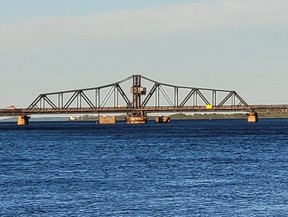
Advertisement 14
Article content
Travelling back to Toronto, we chose to explore Manitoulin Island, the large land mass between Lake Huron and Georgian Bay.
From Greater Sudbury, Hwy. 17 and Hwy 6 took us to the Swing Bridge, a one-lane entry into Little Current, part of the town of Northeastern Manitoulin and the Islands (NEMI).
Once across the Swing Bridge — you might have to wait for opposing traffic to have its turn, or for the bridge to be lowered — immediately on the right is both a visitor information centre and the base for our visit, the Manitoulin Hotel & Conference Centre (manitoulinhotel.com). There are nods to the area’s Indigenous heritage in the artwork on the walls and the tepee-shaped roof of the lobby.
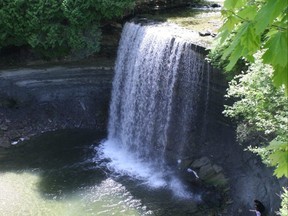
Activities, museums, and businesses on Manitoulin Island are seasonal, so check first before you go (destinationmanitoulinisland.com or exploremanitoulin.com). However, you don’t need to ask to visit some of the natural surroundings, such as Bridal Veil Falls (near Kagawong), or the views from atop McLeans Mountain, Strawberry Lookout, or Ten Mile Point. Ten Mile Point, in particular, has an excellent view, going from trees, to water, to islands, and finally to the horizon.
To leave Manitoulin Island, book a trip aboard the MS Chi-Cheemaun (ontarioferries.com/ms-chi-cheemaun), which departs from South Baymouth (at the south end of the island portion of Hwy. 6) and arrives about two hours later in Tobermory. Hwy. 6 resumes in Tobermory, leading to Wiarton (stop in beautiful Bluewater Park to take a photo of the “Willie Emerging” statue, which honours the town’s famous groundhog), Owen Sound, and points south.
Stay connected with us on social media platform for instant update click here to join our Twitter, & Facebook
We are now on Telegram. Click here to join our channel (@TechiUpdate) and stay updated with the latest Technology headlines.
For all the latest Travel News Click Here

